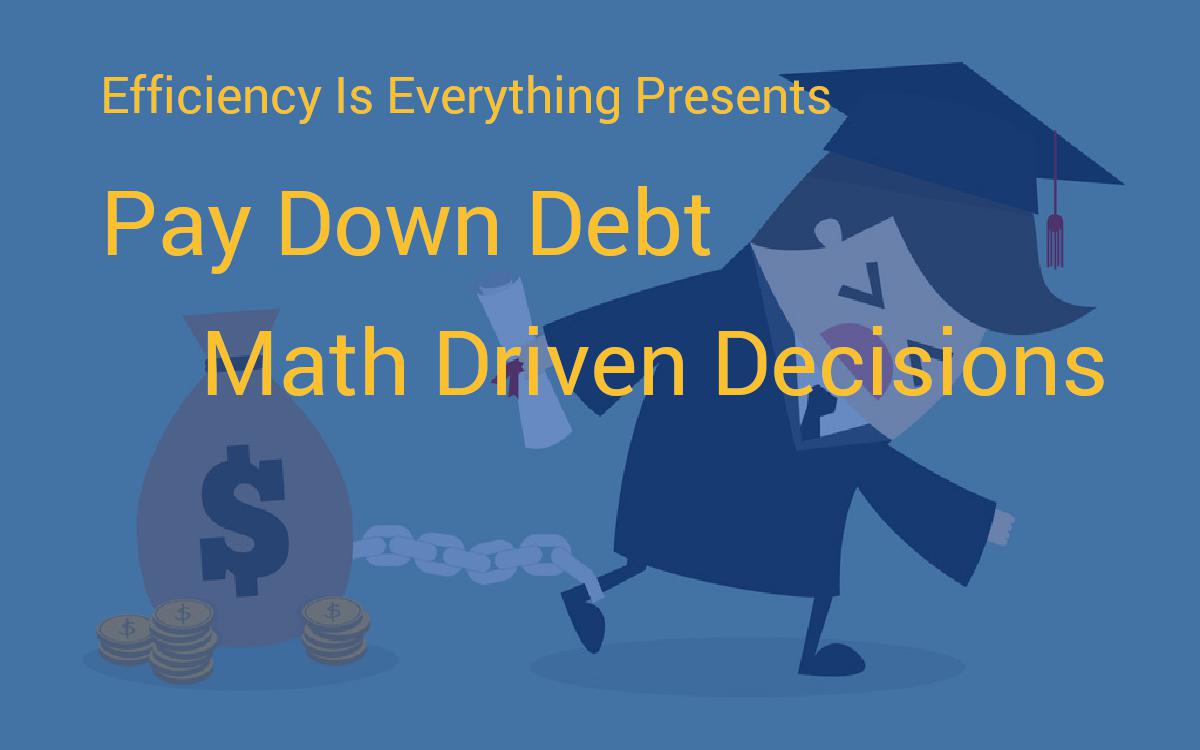The Math- Why You Should Hold Out For Student Loan Forgiveness
First, avoid Dave Ramsey. He suggests paying down debt by size rather than interest rate. This is bad math, and given his connections to financial institutions might be getting paid to be a personal finance terrorist.

Math Driven Debt and Investment Decisions
With over 160,000 USD in debt, a user contacted me to come up with the best decision for paying down student loans.
Before I was presented with every option, this seemed to be an easy interest rate problem.
- If a loan was greater than 7% interest, pay it off
- If a loan was less than 7% interest, investing in the market will likely be the better option.(Long term, HODL)
- If you are risk adverse, a home mortgage may be around 4%, loans above 4% should be paid back fastest, while loans before 4% can be paid back at minimums. Extra money can be spent on refinancing your home
So far, this should make sense. Pay back highest interest rates first, invest in markets when the returns are better than interest.
Taxpayers Weep With This Math
The Pay As You Earn Plan is the unfortunate recommendation. Unfortunate because it encourages not paying back loans, and this will likely fall burden on the taxpayer or cause a change in government policy.
PAYE is where you pay 10% of your discretionary income for the next 20 years(or until its paid off).
Filing independent of a Significant Other, an Efficiency user calculated that after expenses, he has about 30,000 dollars in discretionary income.
- Discretionary Income = (Annual Income – 1.5*Poverty Expenses)
- Percent taken out of Discretionary Income= 10%
- Payment of Loans Per Year = Discretionary Income * Percent Taken Out
The full equation:
Paid Loans in 20 years = 20 Years * 0.1 * (Annual Income – 1.5*Poverty Expense)
For this User,
- Annual Income – 60,000 Dollars
- Discretionary Income-30,000 Dollars
- Amount Paid Per year = 30,000 Dollars * 10%= 3,000 Dollars a year
- Amount Paid in 20 years= 60,000 Dollars
The total loan was $160,000. The correct decision here would save this user 100,000 dollars in their lifetime.
Conclusions and your Next Steps
Do the math yourself with your own loans. 100,000 dollars can buy all sorts of toys. The time it takes to understand your situation will pay better per hour than any job on the market.
By doing this payment plan, you can take the other 90% of discretionary income and
- Save 5-10k emergencies
- Invest it 401k and IRAs
- Invest it in markets, I personally like the ETF- SPY
- Put principle toward your home.
Note: I understand the feeling of having a loan over you. Knowing that you owe money is a mental burden. Life isnt black and white, find out what works for your particular situation.
If you are reading this, I have taken time off Efficiency Is Everything with the plan to reboot this fall with a few high value surprises. A few users asked for the math, and hopefully you have found this one-off article helpful.